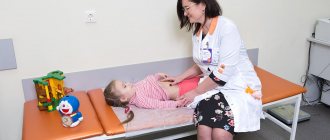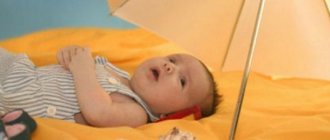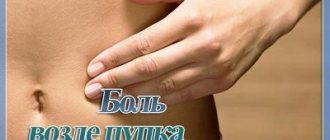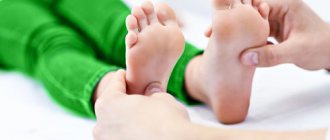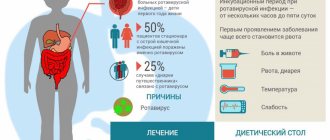Parents often hear complaints from children about painful sensations in the abdomen. The pain can be acute, chronic or recurrent (regularly repeated). During a certain period, the organs of the digestive system in children grow and develop especially intensively, namely during the first year of life, from 5 up to 6 years and at 9-12 years of age. During this period, gastroenterological diseases often develop. Functional disorders may occur, manifested by increased gas formation, cramps in the intestines, and untimely bowel movements. Such painful manifestations are not dangerous. If the body is affected by negative factors, this can cause the progression of disorders and transformation into a chronic pathology.
Why does my child have a stomach ache?
Abdominal pain is a common symptom in children and can have many possible causes. Some common causes include constipation, viral infection, gastrointestinal and urinary tract infections. Most abdominal pain in children is mild and transient and is caused by minor illnesses (eg, gastroenteritis, viral infection). Mild, intermittent pain in the central abdomen is usually not serious. In young children, it can be difficult to immediately determine the cause of mild abdominal pain. In some cases, the cause of pain may be the psychological state of the child.
There are more serious causes of abdominal pain, but they are less common. These include severe infections and problems requiring surgery, such as appendicitis.
Medicines for children
When our children are in pain, we are deprived of peace. All thoughts are only about this, and we are ready to do anything to ensure that our beloved child gets better as quickly as possible. Unfortunately, quite often parents with the best intentions use medications that they take themselves. Why this decision is wrong and what children’s medicines should be purchased for a home medicine cabinet, we’ll look into today’s article.
Why is “adult” medicine not suitable?
Children's medications are not at all a marketing ploy by pharmaceutical companies. The reaction of a child’s body is significantly different from that of an adult due to the presence of certain characteristics. Children and adults exhibit uneven distribution of medications due to differences in tissue hydration, respiratory rate, heart rate, and other factors. In addition, many detoxification enzyme systems mature gradually during child development.
Therefore, very strict requirements are applied to the production of children's medicines. They should not be toxic or contain substances that affect tissue growth and development. Medicines for children should be eliminated by the body faster and at the same time maintain a therapeutic effect for a long time. This applies to drugs for children of all ages, especially newborns.
In addition, as the child’s body grows, the effectiveness of the drugs may increase or, conversely, decrease.
Also, do not forget that giving medicine to a child is not easy. The process can turn into a real circus performance for parents without the opportunity to turn to stuntmen. Therefore, medications for children should be in an easy-to-take dosage form. It is quite difficult for young children to swallow the tablet. Also, the children's medicine must have a high rate of absorption, onset of therapeutic effect and excretion. Therefore, drugs that are presented in tablets for adults are available for children in the form of syrups and suspensions (for oral administration) or suppositories (for rectal use).
In addition, many medicinal substances have a specific taste and smell. It also doesn't play into the hands of harried parents. If a little patient doesn’t like the taste, then even Peppa Pig won’t help persuade him to take the medicine. Therefore, in addition to a harmless composition and a form convenient to take, children's medicines should have a pleasant taste and smell. And ideally, it also has an attractive appearance.
Dosage features: why can’t you break off half the tablet?
Many people believe that it is enough to divide the tablet in half, and you will get a children's dosage. But under no circumstances should you replace the “children’s” dose with half or a quarter of the “adult” dose. This is fraught with multiple side effects and overdose, especially in young children.
The effect of the medicine directly depends on the concentration of the active substance in the desired organ. Doses of drugs for children of different ages are determined through clinical trials - which is why it is necessary to strictly adhere to the dosages prescribed by the pediatrician. Only a doctor, having knowledge of all the features of metabolism in a child’s body, can calculate the optimal dose of the drug depending on the age and weight of the child.
Even when prescribing over-the-counter drugs and there are no special instructions from the doctor, you must carefully read the instructions and adhere to the dosages recommended therein. There are two main doses: the maximum single dose (how much you can drink at one time) and the maximum daily dose (the total amount of medication per day). Below the minimum dose, the medicine will not have a therapeutic effect, and using a dose exceeding the maximum therapeutic dose may cause too strong a toxic effect on the body.
Also, when using liquid dosage forms, you should pay attention to the recommended “cutlery” for dosing the drug. For example, the dosage of syrups is often prescribed in teaspoons. But everyone’s teaspoons are different, and they can be filled to the brim or not completely. Therefore, many medicines are sold complete with measuring cups or spoons.
Putting together a home first aid kit for children
Children have no time to sit still. After all, there is so much unknown in the world waiting for them. Therefore, every home needs a children's first aid kit for any occasion in the life of a little hero.
What means should it be filled with? There is an approximate list of medications recommended by pediatricians, the presence of which will allow you to be prepared for unpleasant childhood surprises:
Wound treatment products:
- hydrogen peroxide;
- an alcohol solution of brilliant green, which is usually called brilliant green, and iodine. Today they can be purchased in pharmacies in a convenient pencil form;
- antibiotic ointment or powder (such as neomycin or bacitracin);
- plaster, bandages and cotton wool.
Allergy medications:
- ointment for insect bites (for example, dimethindene);
- allergy medications in the form of drops (cetirizine, mebhydrolin).
In case of colds:
- antipyretics in the form of syrups or suppositories (paracetamol, ibuprofen);
- antiviral (interferon alfa-2b, chlorphenamine);
- sprays and lozenges for sore throat (benzydamine, amylmetacresol);
- cough syrup (ambroxol, acetylcysteine or herbal preparations);
- nasal drops (with xylometazoline or herbal based);
- solutions for washing the nasal mucosa with sodium chloride.
When your stomach hurts:
- for diarrhea (dioctahedral smectite, maltodextrin);
- powders for preparing solutions that replenish the water-salt balance against dehydration (they must contain sodium chloride, sodium citrate, potassium chloride and dextrose);
- sorbents (colloidal silicon dioxide, polymethylsiloxane polyhydrate).
Important! When making a shopping list for a trip to the pharmacy, do not forget to consult your doctor.
Also, always save the instructions and check expiration dates often. And do not forget that the home first aid kit should be kept away from children, out of their reach.
Be healthy!
Sources:
- Telnova, E. A. About the features and problems with medicines for children / E. A. Telnova, A. V. Plesovskikh, O. A. Zagoruichenko. // Bulletin of the National Research Institute of Public Health named after N. A. Semashko. - 2022. - No. 3. - P. 28–33.
- Ovod, A. I. Improving the quality of medical care for children based on the development of the domestic pharmaceutical market for children's medicines / A. I. Ovod, E. Yu. Kuznetsova, V. A. Solyanina [etc.] // Remedium. Magazine about the Russian drug market and medical equipment. — 2022. — pp. 45–51.
- Mikhailova, O. A. Problems of drug dosing in children: known facts and unresolved issues / O. A. Mikhailova, V. N. Drozdov, N. B. Lazareva [and others] // Fundamental Medicine. - 2018. - No. 4. - P. 350–354.
- Directory of drugs and pharmaceutical products RLS.
Anna Gorobets, pharmacist, medical journalist
Photo depositphotos.com The author’s opinion may not coincide with the opinion of the editors
Differential diagnosis: conditions causing abdominal pain.
| Age | Main reasons |
| Newborns | Infantile colic, enterocolitis (eg, cow's milk protein-induced), pyloric stenosis |
| Infants and children <2 years of age | Viral diseases, infantile colic, intussusception, mesenteric adenitis, reflux esophagitis, Hirschsprung's disease. |
| 2-5 years | Viral diseases, intussusception, appendicitis, pharyngitis, tonsillitis, mesenteric adenitis, hemolytic-uremic syndrome, testicular or ovarian torsion, pneumonia, bacterial peritonitis |
| > 5 years | Viral diseases, appendicitis, pharyngitis, tonsillitis, mesenteric adenitis, testicular or ovarian torsion, epididymitis, pneumonia, inflammatory bowel disease, cholelithiasis, pancrolithiasis, psychosomatic pain |
| Teenagers | Rupture of an ovarian cyst, testicular or ovarian torsion, epididymitis associated with the menstrual cycle, sexually transmitted infections, pelvic inflammatory disease, inflammatory bowel disease, pregnancy, ectopic pregnancy, cholelithiasis, cholecystitis, pancreatitis, urolithiasis, functional pain in stomach. |
| All children | Abdominal trauma, gastroenteritis, constipation, urinary tract infection, pyelonephritis, sepsis, diabetic ketoacidosis, intestinal obstruction (eg, abdominal adhesions), hepatitis, hernia, malignancy |
When should parents see a doctor if their child has a stomach ache?
Parents are often unsure when they should see a doctor about their child's abdominal pain. It always makes sense to consult a doctor if the child’s condition is in doubt or concern. You should not delay seeing a doctor if your child has:
- Strong pain
- Pain that lasts several hours or comes and goes
- The pain is localized in one area of the abdomen.
- The child has a fever (above 38.5⁰C)
- A rash appeared on the skin
- The child is pale, lethargic and drowsy
- The child has prolonged vomiting or diarrhea
- There is blood in the vomit or feces (or the feces turn black)
- The child refuses to eat or drink
- “Lumps” or lumps are felt in the abdomen or groin
- The child complains of pain when urinating
- Urine has an unpleasant odor
- Traces of blood appeared in the urine
Treatment of abdominal pain
What should you do if your child has a stomach ache? In some cases (appendicitis, inflammation, infections, kidney disease and other serious disorders), treatment is carried out inpatiently. The course and duration of therapy depend on the specific diagnosis. We recommend that any treatment be carried out in accordance with the instructions of the attending physician. Below is a list of drugs and folk remedies that help with gastrointestinal disorders in children.
Medications
- For severe diarrhea, use saline solution.
- At elevated temperatures - antipyretic drugs.
- In case of poisoning, use sorbents (for example, Filtrum).
- For dysbacteriosis, medications to normalize the intestinal microflora.
- For intestinal infections - antibiotics.
- For digestive disorders - enzyme preparations (Micrazim).
- For food allergies - antihistamines.
- For very severe pain, use antispasmodics.
ethnoscience
- Chamomile tea;
- Wormwood with honey or pumpkin seeds - they help rid the child’s body of parasites;
- A decoction of lemon juice with the addition of cinnamon;
- Rice decoction with fennel seeds;
- Mint-ginger infusion;
- Potato juice with honey;
- Decoction of oak bark;
- Rosehip decoction.
For childhood abdominal pain, any traditional medicine can be used only on the recommendation of a doctor. The fact is that such remedies are far from universal and have a number of contraindications. In particular, some of them should absolutely not be taken together with traditional medications.
Important: before use, read the instructions or consult your doctor.
Should you call an ambulance?
In most cases, abdominal pain in children is not an emergency, and there is no need to call an ambulance. There are only a small number of cases when it is necessary to seek emergency medical attention, for example:
- A child experiences abdominal pain after an injury, such as a fall or accident.
- For boys: Your child has swollen or painful testicles.
- Vomiting bile
- Localized pain in the lower abdomen
- Signs of peritonitis
- Associated shock
- Dehydration due to vomiting and/or diarrhea.
If parents are unsure whether their child needs emergency medical care, they should contact the doctor and ask all the necessary questions.
Still have questions?
Get an online consultation from leading pediatricians in St. Petersburg!
A professional and experienced pediatrician will answer your questions.
Medical care for a child without leaving home at a convenient time.
sign up for a consultation
A Skype consultation lasts 45 minutes.
What can be done to relieve a child's pain?
There are many things parents can do to relieve their child's stomach pain. Often something as simple as gently rubbing the belly with your hand or distracting the child's attention can help relieve the condition. You can also offer the child a drink of water or sit the baby on the potty or toilet. If this does not help, the child can be given paracetamol in the dosage recommended for the appropriate age and weight. Children should not be given aspirin because it can cause a rare but serious condition called Reye's syndrome.
If you give a child paracetamol, will this prevent the doctor from making a correct diagnosis?
There is a perception among parents and doctors that giving a child a painkiller such as paracetamol may prevent the doctor from making a correct diagnosis. However, data from numerous studies have shown that this is not the case. Prescribing paracetamol to a child will not prevent the doctor from diagnosing the child's condition and will not mask the serious cause of the abdominal pain. In fact, a simple pain reliever such as paracetamol may be a good measure to use before deciding whether to take your child to the doctor.
What to give from the stomach to a child
First, you need to establish the cause of the pain!
There is no universal cure for stomach pain for children. You need to start from the cause that caused the pain. It should be remembered that the child’s body is not yet a strong and fully formed system, therefore feeding a child with pills is strictly prohibited.
First of all, you need to try homeopathic remedies and methods, and then, if this does not help, give medications.
If your baby has gas or colic, you need to do the following:
- Place the child with his stomach on his hand and his face on the side, rock him a little.
- Place a warm towel under your tummy.
- Keep your baby in a warm bath for 10 minutes.
- Massage your abdomen by applying a little oil to your palms. The stroking motion should be directed downwards to help the gases leave the intestines.
The main thing is that the mother herself needs to be calm at this time, so that this calmness is passed on to the baby. He will know that the dearest person is nearby and will help him. Colic is a short-term phenomenon, and in an hour or two it will pass.
What does the doctor pay attention to when examining a child?
As with any child being examined by a doctor, the first thing to determine is how severe the child's condition is. To determine this, doctors look at a number of factors, including the baby's general appearance, vital signs such as heart rate, breathing rate, temperature, and any information the parents have given them.
Then the doctor examines the tummy. Simply placing your hand on your stomach can give your doctor a lot of useful information. If the tummy is soft when pressed and does not hurt much, then a serious cause for the pain is much less likely. If there is pressure on the child’s abdomen and he experiences severe discomfort, you should immediately think about hospitalization. Unfortunately, children are poor at localizing pain. Thus, pain caused by a cause outside the abdominal cavity (eg, basal pneumonia, testicular torsion) can also manifest as abdominal pain. Conversely, intra-abdominal problems may result in pain elsewhere (for example, kidney problems may present as testicular pain, and subdiaphragmatic problems may cause shoulder pain).
Simple tests are often done, such as checking the child's urine for infection or checking the child's blood sugar levels. After collecting all the information, the doctor will try to find out the cause of the child’s abdominal pain. In an unhealthy child it is important to find the cause, but often in a healthy child such a cause cannot be found.
Irritable bowel syndrome in children
Irritable bowel syndrome in children is a functional disease of the gastrointestinal tract, accompanied by motor-evacuation disorders. Irritable bowel syndrome in children is characterized by abdominal pain that decreases after defecation, rumbling, flatulence, frequent urge to defecate and a feeling of incomplete bowel movement, alternating diarrhea and constipation. Diagnosis of irritable bowel syndrome in children is carried out by excluding organic pathology using ultrasound of the abdominal cavity, irrigoscopy, endoscopy, colonoscopy, stool analysis for helminth eggs, etc. Treatment includes nutritional correction, prescription of antispasmodics, carminatives, sedatives, antidiarrheal or laxative drugs, enterosorbents. Symptoms of irritable bowel syndrome in children
For irritable bowel syndrome in children, variability and diversity of complaints and a long history are typical. Deterioration in well-being depends on psycho-emotional factors. There are no disturbing factors at night. There is also a discrepancy between the abundance of complaints and the good general condition of the patient. This disease has no tendency to progress. In most cases, pain appears before bowel movement and goes away immediately after it.
A typical symptom of IBS in children is abdominal pain or discomfort that lasts for 3 months or even longer, becoming less severe after the child has gone to the toilet. The frequency of bowel movements also changes - it can be either 3 times a day or less than 3 times a week. The shape of the stool is also outside the norm.
Additional symptoms of irritable bowel syndrome:
- rumbling or bloating
- copious mucus secretion
- feeling of incomplete emptying of the rectum - difficulty in defecation
- feeling of incomplete emptying
- imperative urge to defecate
Treatment of irritable bowel syndrome in children
The treatment is complex, with increased physical activity and psychotherapeutic influence. Prescribing myotropic antispasmodics for the treatment of IBS is more effective than using analgesic drugs that dull the pain but do not eliminate its cause. Of the myotropic antispasmodics, children aged 6 months to 2 years are prescribed papaverine 5 mg orally, 3-4 years - 5-10 mg, 5-6 years - 10 mg, 7-9 years - 10-15 mg, 10-14 years - 15-20 mg 2 times a day; drotaverine (no-spa, spasmol) for children aged 3-6 years - 40-120 mg in 2-3 doses, maximum daily dose - 120 mg; 6-18 years old - 80-200 mg in 2-5 doses, daily dose - 240 mg. Pinaveria bromide (dicetel) is recommended at 50 mg 3 times a day or 100 mg 2 times a day for adolescent children. The tablets are not chewable and should not be taken before bed.
M-cholinergic receptor blocker - hyoscine butyl bromide (buscopan) in suppositories and tablets of 10 mg is used from the age of 6, 1-2 tablets (or 1-2 rectal suppositories) of 10-20 mg 3 times a day. Eliminates spasms without changing normal intestinal motility, mebeverine (duspatalin, Sparex) in tablets of 135 mg and in retard capsules of 200 mg, which is prescribed from 6 years of age at a dose of 2.5 mg/kg in 2 doses 20 minutes before meals. Once the effect is achieved, the dose is gradually reduced over several weeks.
Slowing intestinal motility can be achieved by prescribing adsorbents, for example, dioctahedral smectite (smecta, neosmectin), while the use of loperamide (imodium) is justified only for severe, intractable diarrhea and should be well controlled. Loperamide (imodium) in the form of lozenges of 2 mg in children from 2 to 5 years old is used 1 mg 3 times a day, 6-8 years old - 2 mg 2 times a day, 9-12 years old - 2 mg 3 once a day; course - 1-3 days. Imodium Plus contains simethicone. Antibiotics are not indicated for the treatment of diarrhea.
If constipation predominates, lactulose (Duphalac) is used; the prescription of other laxatives is not always justified. Pre- and probiotics are recommended for post-infectious IBS. A probiotic with antidiarrheal and antitoxic effects, enterol is prescribed in a dose of 250 mg once a day; for children, before use, 1 capsule is diluted in 100 ml of warm water.
In stressful situations, neurotropic drugs with anxiolytic action with a sedative effect are indicated: phenazepam, sibazone, nozepam, lorazepam and others, the dose is selected individually, for adolescents the RD is 0.25-0.3 1-3 times a day. For severe symptoms of psychological maladjustment, amitriptyline and other antidepressants are used.
In children, herbal remedies are more often used - hawthorn fruits + black elderberry flower extract + valerian rhizomes with roots (novo-passit). It is prescribed from 12 years of age, 5-10 ml or 1 tablet 3 times a day. Valerian rhizomes with roots + lemon balm medicinal herb extract + peppermint (Persen, Persen Forte) children 3-12 years old are prescribed 1 tablet 1-3 times a day, children over 12 years old - 1 tablet 3 times a day.
For flatulence, drugs are recommended that reduce gas formation in the intestines, which weaken the surface tension of gas bubbles, lead to their rupture and thereby prevent stretching of the intestinal wall. Simethicone (espumisan) and combination drugs can be used: pancreoflat (enzyme + simethicone), unienzyme (enzyme + sorbent + simethicone), from 12-14 years old - meteospasmil (antispasmodic + simethicone). Pankreoflat is prescribed to older children 2-4 tablets with each meal. For young children, the dose is selected individually.
In case of protracted IBS, metabolites and vitamins, vitamin-like agents are indicated: thioctic acid (lipoic acid, lipamide), β-tocopherol, flavonoid (troxerutin); calcium and magnesium preparations: calcium-D3 Nycomed, calcevit, calcium-Sandoz forte, magnesium B6, magnesium orotate (magnerot).
If the condition does not return to normal within 4-6 weeks of therapy, differential diagnosis with other diseases is carried out to clarify the nature of the gastrointestinal tract lesion.
Physiotherapeutic treatment is indicated for children with abdominal pain combined with diarrhea. Light heat is prescribed in the form of warming compresses: water, semi-alcohol, oil, electrophoresis with novocaine, calcium chloride, zinc sulfate; Therapeutic muds are effective. Coniferous and radon baths are recommended. As the pain subsides, pulsed Bernard currents and abdominal massage can be used to increase the tone of the muscles of the anterior abdominal wall. For constipation, preference is given to methods aimed at normalizing the motor-evacuation function of the intestines and eliminating spasms. Sanatorium-resort treatment is carried out both in local and balneological conditions. Along with a complex of physiotherapeutic methods, the intake of mineral waters is of great importance. For diarrhea, low-mineralized waters (1.5-2.0 g/l) such as 'Smirnovskaya', 'Slavyanovskaya', 'Essentuki N 4' are recommended at the rate of 3 ml/kg body weight, for constipation - 'Essentuki N 17', ' Batalinskaya' at the rate of 3-5 ml per 1 kg of body weight. Prevention. Patients with IBS need to normalize their daily routine and avoid prolonged mental stress. It is important to maintain an adequate level of physical activity and a normal diet in any conditions. Forecast. The prognosis of the disease is favorable. The course of the disease is chronic, recurrent, but not progressive. Treatment is effective in 30% of patients, stable remission is observed in 10% of cases. The risk of developing inflammatory bowel disease and colorectal cancer in this group of patients is the same as in the general population.
What to do if the cause of the child’s abdominal pain has not been found?
Often in children suffering from abdominal pain, the cause of their condition is not discovered. Some children may have repeated episodes without a clear cause, and this can be confusing for parents. This condition is sometimes called functional abdominal pain, and is quite common (affecting 10-15% of children). Some children may also have recurring stomach pain when they are worried (about themselves, friends, family or school). If your child experiences recurring episodes of pain, it is important that he is seen by his regular healthcare provider, who can help diagnose and treat the pain.
If there is any doubt about the child’s condition, the doctor will suggest hospitalization to observe how the child’s condition develops. If it turns out that he needs emergency help, the child can be quickly operated on. If nothing serious is revealed and the pain goes away, the child will be sent home, under the supervision of a pediatrician and parents.
Call a doctor at home Make an appointment with a doctor or call +7 (812) 331-17-74
Diagnostics
If you experience pain in the abdomen, you should see a pediatrician. He will either independently determine the diagnosis and give a referral for the necessary tests, or ask to see specialized specialists (urologist, etc.). Below is a list of tests and procedures that doctors may prescribe for a baby with abdominal pain, including:
- Ultrasound of the abdominal and pelvic organs (liver, gall and bladder, pancreas, spleen, kidneys, etc.).
- Colonoscopy is an examination of the large intestine using a special device (colonoscope). Can be conducted virtually.
- Fibrogastroscopy (FGS) is performed if doctors suspect an ulcer or gastritis, as well as if the child complains of very severe abdominal pain, the cause of which has still not been identified. It is quite difficult for small children to swallow a fiberscope, so instead of FGS, children are often prescribed an X-ray of the stomach.
- Irrigoscopy or sigmoidoscopy (for intestinal diseases).
- MRI of the abdominal cavity (most often done when it is impossible to make an accurate diagnosis).
- Urine tests (general) and blood tests (general and biochemical).
- Blood test for the presence of hepatitis B and C (not often prescribed).
- Fecal analysis for helminths, various intestinal infections and dysbiosis.
- Coprogram.
- Blood test for tumor markers (if cancer is suspected).
If abdominal pain occurs, the child will not necessarily need to undergo all of the above procedures. The decision on the need for a particular procedure is made by a pediatrician.
In particular, in most cases, children are prescribed only a biochemical blood test and ultrasound. A more detailed examination is required much less frequently, since each such case is examined by doctors separately.
